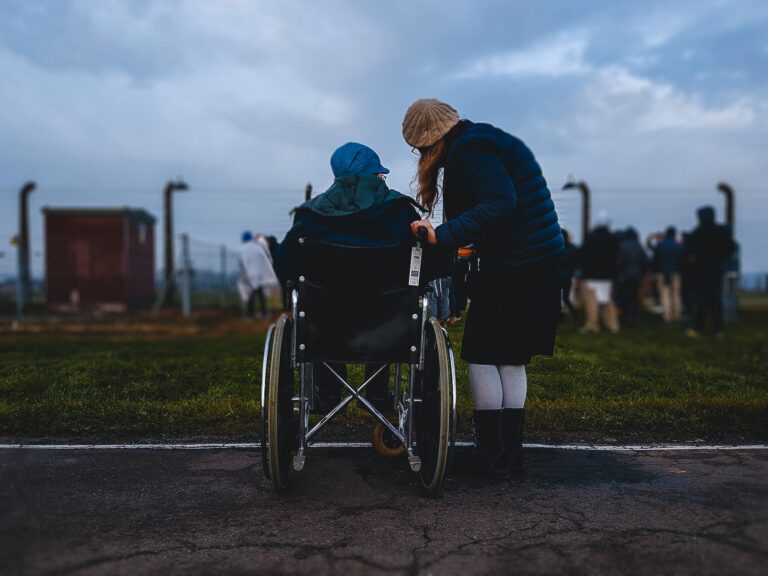
Chronic inflammatory demyelinating polyneuropathy (CIDP) is a rare, debilitating, and degenerative neurologic illness characterized by progressive weakness due to peripheral nerve damage.
The exact cause is unknown, but it is believed to be primarily autoimmune or inflammatory, with no specific predisposing risk factors clearly identified.
Inflammation of nerve roots and peripheral nerves results in myelin sheath destruction resulting in progressive weakness and reduced functioning of extremities due to nerve damage.
Early recognition and proper treatment are critical in helping patients avoid a significant amount of disability.
Critical Statistics
Men are affected about twice as often as women, and the condition increases in incidence with age. The gradual onset of CIDP can delay diagnosis by several months or even years, resulting in significant nerve damage that may limit and delay response to therapy.
Most individuals will require long-term treatment, and if left untreated, an estimated 30% of patients would eventually become wheelchair dependent.
Studies have shown that patients with CIDP have 7.5 times higher mean healthcare costs when compared to those without CIDP.
What Is CIDP?
CIDP occurs more commonly in males and those of advanced age. Although there is currently no cure, there are treatment options available to slow down the progression of symptoms.
Get IVIG Copay Assistance
Speak to a SpecialistSymptoms
When CIPD occurs, nerve damage outside the brain ensues, followed by demyelinating polyneuropathy symptoms which include:
- Weakness and tingling in the arms and legs
- Loss of sensation and reflexes
- Paralysis if untreated
Although there is no cure for this illness, early diagnosis and treatment can help manage symptoms and prevent irreversible nerve damage.
Eventually, when the myelin is damaged, nerve fibers will not be able to conduct electrical impulses to stimulate muscle contraction and transmit sensory information throughout the nervous system.
It may take some time for the first symptoms of inflammatory demyelinating polyneuropathy to be experienced. It is also important to understand that symptoms are not the same for everyone. CIDP symptoms include:
- Unexplainable numbness
- Tingling in the arms and legs
- Weakness in the limbs
- Loss of balance
- Loss of sensation
- Reduced reflexes
Aside from the symptoms stated above, if CIDP neuropathy is untreated, paralysis may occur. Early diagnosis and treatment can help prevent paralysis and irreversible nerve damage.
If you are experiencing any of the symptoms above, speak to a doctor to discuss the possibility of having this disease.
CIDP vs. GBS
This condition is extremely rare, with approximately 5 to 7 out of every 100,000 people diagnosed with the disease, according to RareDiseases.org. Moreover, this health condition is often confused with Guillain-Barre syndrome (GBS) because of the similarity of symptoms. Both are autoimmune diseases that affect the myelin (an insulating layer or sheath that forms around nerves).
Rate of Progression
In Guillain-Barre syndrome (GBS), with a subtype referred to as acute inflammatory demyelinating polyneuropathy (Landry’s ascending paralysis), symptoms progress rapidly while in CIDP, symptoms take longer to manifest. Therefore, CIDP cannot be diagnosed until the symptoms persist and worsen over a period of 8 weeks or longer.
Severity of Damage to Nerves
CIDP is related to inflammatory demyelinating polyneuritis while Guillain-Barre syndrome (AIDP) can involve axonal and demyelinating polyneuropathy. (Axonal means the nerves are directly damaged by the disease.)
Evaluation, Testing, and Diagnosis
A differential diagnosis is necessary to distinguish between these two conditions.
Generally, diagnosing these illnesses is done based on the symptoms of the patient, a physical exam, and the following tests:
- Nerve conduction and EMG (usually showing a chronic polyneuropathy): During this test, the nerve is stimulated with mild electrical impulses, usually with surface electrode patches attached to the skin.
- Spinal Fluid Analysis (usually showing elevated protein with normal cell count): During this test, a needle is inserted into the lower part of the spine to obtain a small sample of the liquid surrounding your spinal cord.
- MRI: In this procedure, powerful magnetic fields and radio waves are used to take pictures of the spinal cord and nerve bundles. This procedure can detect damage to the nerves.
- Blood and Urine Tests: These tests are done to rule out other disorders that may cause neuropathy and to look for unusual proteins.
In addition to the tests above, there is also a rare test called a nerve biopsy, which is used to look at microscopic changes in the nerve.
Home Infusion
We Come To YouPrognosis
According to a study, 26% of the patients with polyneuropathy who were treated using infusions were able to eliminate all their demyelinating polyneuropathy symptoms.
Moreover, another 26% of the patients with refractory CIDP were able to walk with continuous immune treatments, while 34% were able to walk without additional treatments.
Only 14% of the total patients in the long-term prognosis study still had a severe disability.
Prognostic Factors
Aside from the age and sex of a patient, there are different prognostic factors that affect the treatment of a patient, such as the following:
- Mode of onset
- Response of the patient to steroid treatment
- Motor electrodiagnostic characteristics
In the same study, it was reported that there is an 89.5% chance for patients to have all their symptoms go away or their health condition to improve as long as their response to medications is positive.
The Life Expectancy of CIDP Patients
Although chronic inflammatory demyelinating polyneuropathy is generally not fatal, and the life expectancy of a patient is usually comparable to someone who does not have the neurological disease, a patient’s quality of life can be significantly impacted.
The longer the illness goes untreated, the more nerve damage can permanently limit sensory and motor functions. If severe nerve damage sets in, patients may require assistance with daily living activities due to a lack of mobility.
If you are experiencing unexplainable numbness or a loss of reflexes in your limbs for a prolonged time, you may want to discuss the possibility of having CIDP with your doctor.
The sooner you can identify the disease and begin treatment, the higher the chance you can reverse symptoms and prevent further damage to your nerves.
Types
Aside from acute inflammatory neuropathy, there are a number of variants or types of chronic inflammatory demyelinating polyneuropathy. Below is a list of the variants of this health condition.
Typical
Typical CIDP is a symmetrical motor and sensory progressive neuropathy affecting proximal and distal muscles with loss of deep tendon reflexes.
Multifocal Motor Neuropathy
This is a pure motor inflammatory demyelinating disorder in which there is asymmetric weakness in the distribution of individual nerves that can be confirmed by diagnostic nerve conduction results.
Lewis-Sumner Syndrome
This is a sensory-motor disorder in which there is sensory loss and weakness in the distribution of individual nerves. Diagnostic nerve conduction studies confirm focal nerve involvement.
Pure Sensory
This is a condition where there is a sensory loss, pain, and poor balance with abnormal gait or walking. There is no weakness, but frequently, motor nerve conduction studies are abnormal.
Pure Motor
The pure motor variant of CIDP is a condition where there is weakness and loss of reflexes without sensory loss.
Consult an IVIG Specialist
The Best IVIG Home Infusion | Get IVIG Treatment AssistanceEarly Diagnosis and Treatment
Although there is no cure for this illness, early diagnosis and treatment can help manage symptoms, preventing paralysis and irreversible nerve damage.
Patients with CIDP report weakness in the hips and legs, loss of balance, burning pain, and numbness of the hands or feet as the most bothersome symptoms.
Treatment Goals
Treatment goals are to alleviate symptoms, improve functionality, and achieve long-term remission.
Treatment Options
Current treatment options include:
- Corticosteroids
- Immunosuppressive agents intravenous
- Subcutaneous immunoglobulin
- Plasma exchange
Prognosis is good with early and appropriate treatment.
Diagnosis
CIDP is one of several neuropathies that share demyelination and immune mediation in common and could be misdiagnosed with other conditions. The clinical features that distinguish CIDP from other peripheral neuropathies are the prominence of muscle weakness and the early involvement of upper extremity, proximal muscles, and distal muscles.
While the initial suspicion for CIDP is clinical, the diagnosis is confirmed by the evidence of peripheral nerve demyelination by electrodiagnostic findings, by nerve biopsy, and by the exclusion of other disorders that may cause or mimic CIDP.
Patients with atypical features or diagnostic uncertainty should be referred to a neuromuscular specialist with expertise in the diagnosis of peripheral nerve disorders.
The Following Criteria Support the Diagnosis of CIDP:
- Progression over at least two months
- Weakness more than sensory symptoms
- Symmetric involvement of arms and legs
- Proximal muscles involved along with distal muscles
- Widespread reduction or loss of deep tendon reflexes
- Increased cerebrospinal fluid (CSF) protein without pleocytosis
- Nerve conduction evidence of a demyelinating neuropathy
- Nerve biopsy evidence of segmental demyelination with or without inflammation
- Gait ataxia secondary to large fiber sensory loss
Electrodiagnostic Testing
Nerve conduction studies of both sensory and motor nerves should be performed in all patients with suspected CIDP. This is a critical component of the evaluation.
Laboratory Studies
There are no laboratory test findings that specifically point to CIDP. The purpose of testing is to look for disorders that are either associated with or mimic CIDP.
Laboratory Evaluation
Laboratory evaluation in patients with suspected CIDP should include the following:
- Fasting serum glucose
- Glycated hemoglobin (HbA1c)
- Serum calcium and creatinine
- Complete blood count
- Liver function tests
- Thyroid function studies
- Serum protein electrophoresis (SPEP) and immunofixation
- Serum-free light chain (FLC) assay, or 24-hour urine protein electrophoresis (UPEP) and immunofixation
Lumbar Puncture
Cerebrospinal fluid (CSF) analysis is recommended in most patients with suspected CIDP and particularly for patients for whom the clinical and electrodiagnostic findings are inconclusive.
Get IVIG Copay Assistance
IVIG Financial AssistanceTreatment
Most patients experience a progressive course, but roughly one-third have a relapsing/remitting or monophasic pattern. Improving symptoms, restoring functionality, and achieving long-term remission are the goals of treatment. Patients may need treatment indefinitely.
When immunoglobulins (Igs) are used, the results of research suggest that 75% of patients will improve.
About one-third of patients experience remission, and an additional 44% will have stable active disease.
Early administration of treatment to suppress immune response is important in CIDP. The goal is to stop the immune attack against the myelin sheath of peripheral nerves. This can improve symptoms and function and can prevent or minimize long-term disability.
Treatment Options for CIDP Patients
Inflammatory neuropathy is an autoimmune disease, and therefore, treatment will focus on addressing the symptoms, and must be able to suppress the immune response that is causing the attack of the myelin.
CIDP generally responds to immunosuppressive or immunomodulatory treatment with glucocorticoids, intravenous immune globulin, or plasma exchange.
Early administration of effective treatment is important in CIDP. The goal is to stop the immune attack against the myelin sheath of peripheral nerves so that secondary axonal degeneration is minimized. This can improve symptoms and function and can prevent or minimize long-term disability.
Below are the possible treatments for chronic inflammatory polyneuropathy and neuropathy:
- Corticosteroids: Corticosteroids are similar to anti-inflammatory hormones made by the body and are used to suppress the body’s immune system. Additionally, these medications can improve the strength of a patient. They are inexpensive drugs but their side effects can limit their use.
- Intravenous Immunoglobulin (such as Gammagard, Privigen, or ArgenX): This is a new treatment for CIDP and the only FDA-approved treatment for this disease. This medication therapy is used to infuse antibodies into the blood.
- Plasmapheresis: This is a plasma exchange process that is used for removing harmful antibodies contained in the plasma.
Aside from these immunosuppressive medicines, doctors may also recommend physical therapy to help improve mobility. Treatment can help increase physical strength, balance, and coordination to provide an improved quality of life.
In one clinical study, it was reported that the drug Rozanolixizumab is proven to be safe and effective for the elderly and pediatric patients. Together with other medical treatments, there is a chance for the patient to have increased physical strength, balance, and coordination, leading to an improved quality of life.
Intravenous Immunoglobulin
The best treatment for CIDP is IVIG infusion therapy. Immune globulin infusion is an IV-based treatment designed to help patients with weakened immune systems. Infusion treatment delivers antibodies directly and regularly to patients through an IV to fight off infections and inflammation.
Side Effects
IVIG therapy can cause mild to more severe side effects, and it is important to take measures in order to minimize these side effects. Examples of these measures are the following:
- Staying hydrated
- Taking pre-medications
- Listening to what your body is trying to tell you
Unexpected side effects may occur during the course of treatment. With the exception of anaphylaxis or allergic reaction, most of the side effects are common and sometimes moderate or severe.
Whatever side effects you are experiencing, always share them with your medical doctor. Below are the common side effects of IVIG:
- Fever
- Headaches
- Aching muscles
- Nausea
- Stomach pains
- Hair Loss
- Weight gain
- Rash
- Arthralgia
- Itch
- Fatigue
- Diarrhea
Moderate side effects of this product affect a patient’s work, sleep, and appetite. Below are the moderate side effects of this medication:
- Flushing
- Chills
- Wheezing
- Tachycardia
- Pain in the lower back
- Hypotension
Another moderate side effect of this medication is a headache but it is only considered moderate when it lasts for more than 24 hours and on a scale of 1 – 10, the pain can be described at a level of 6 – 8.
If the headache does not go away, it can lead to a serious condition called aseptic meningitis, which occurs when there is an irritation of the meninges in the brain and spinal cord. This is a rare side effect.
Below are the rare or long-term side effects of using IVIG:
- Aseptic meningitis (inflammation of the brain)
- Liver problems
- Kidney failure
- Hemolytic anemia (a condition that destroys red blood cells)
Adverse Effects
Infusion treatments have a remarkably good safety record for long-term administration. However, in some cases, it has been reported that this product causes adverse effects such as the following:
- Myalgia (fever)
- Blood pressure changes
- Tachycardia
- Anaphylactic reactions
Aside from the adverse effects listed above, there are also diseases associated with the long-term treatment of immunoglobulin infusions:
- Renal Dysfunction: This disease is more common in patients who are over 65 who have pre-existing conditions such as hypertension and diabetes. Therefore, any changes in urination, including color changes (dark-colored urine) must be notified to the physician.
- Blood Clots: Thrombotic events or clot formation have been reported with the use of this product. Although this is very rare, all patients must be aware of the possibility of such events. Blood clots can happen in elderly patients with a history of thrombotic events, diabetes, and heart problems. Usually, a clot is formed a few hours after the infusion. Seek emergency care or call 911 for immediate assistance.
- Anaphylaxis: This is the most serious adverse effect that is likely to occur during treatment and it appears within the first 15 – 30 minutes of infusion. This condition is characterized by difficulty breathing, changes in the gastrointestinal system, cardiovascular changes, and skin changes such as rashes or hives. If anaphylaxis is suspected, immediately call a doctor or 911.
Pre-medications such as aspirin and Benadryl are often administered before the procedure to address these known side effects.
In addition, administering the immune globulin at a slower rate may help prevent or lessen the severity of these side effects. Experienced infusion centers and nurses will often take precautions to prevent or help minimize any side effects before beginning treatment.
IVIG therapy may affect how vaccines work. Before getting a COVID-19 vaccine, talk to your medical professional to avoid immune globulin and COVID-19 vaccine interaction.
At Ameripharma, we have experienced and caring nurses that work hard to ensure your comfort and safety. IVIG Infusion can be done from the comfort of your home and may be covered by your medical insurance.
Post-Treatment Medications
If you experience any of the side effects listed above, you may be given medications to alleviate the symptoms after your treatment session.
- Acetaminophen or ibuprofen is often given to relieve headaches and fever symptoms including high body temperatures and body aches.
- Anti-nausea medication can be given to help with nausea and vomiting.
- Benadryl is also commonly administered in the presence of anaphylactic symptoms including hives, rashes, and shortness of breath.
According to the Immune Deficiency Foundation, half of the infused immune globulin is metabolized within a 3 to 4 week period. Since IVIG is meant to infuse larger amounts of Ig, patients can normally go 3 to 4 weeks between treatments.
SCIG, on the other hand, delivers smaller amounts of Ig and takes longer to be absorbed, which often requires more frequent infusion intervals ranging from daily to weekly.
A patient with chronic inflammatory demyelinating polyneuropathy must also have a proper diet and healthy lifestyle. This includes avoiding alcohol. In one clinical study, it was reported that CIDP and alcohol are related. When a patient with this condition consumes alcohol, the nerves become more damaged and abnormal because of nutritional deficiencies.
What To Expect With CIDP?
Soon after being treated with IVIG, daily activities such as climbing stairs and walking without assistance may be possible. Without treatment, however, symptoms of this disease may lead to nerve damage including paralysis and disability. But with treatment, the quality of life may improve and it may be possible for the disease to be in remission for some time.
Treatment Info
Get IVIG Prior AuthorizationFAQs
Is CIDP fatal?
This condition is generally not considered to be fatal. However, CIDP can affect the quality of life of the patient severely. The longer the disease goes untreated, the more damage occurs to the sensory and motor functions of the patient.
Is demyelinating polyneuropathy life-threatening?
Idiopathic demyelinating polyneuropathy is generally not fatal, but it may cause a patient to be disabled for life.
What is the difference between MS and chronic inflammatory polyneuropathy?
Both multiple sclerosis (MS) and chronic inflammatory demyelinating polyradiculoneuropathy involve damage to the sheath that surrounds nerves, called myelin. However, multiple sclerosis is a disease affecting the central nervous system, which includes the brain and spinal cord, while CIDP doesn’t affect these areas of the body.
Does exercise help CIDP?
Exercise does help patients with inflammatory peripheral neuropathy improve their condition. However, only an appropriate exercise is advisable in order to properly improve the strength and endurance of a patient.
Can you live a normal life with CIDP?
It is possible for patients with inflammatory demyelinating polyradiculoneuropathy to live a normal life as long as the patient is getting immunoglobulin therapy and treatment.
How fast does CIDP progress?
Peripheral neuropathy is a condition with slow progression, unlike acute demyelinating polyradiculoneuropathy or Guillain-Barré syndrome. At around 8 weeks after nerve damage, symptoms start to worsen.
Can you fully recover from CIDP?
Yes, it is possible to recover from CIDP. There are different classes of this condition: progressive, recurrent, and monophasic. A patient with monophasic CIDP will only have to deal with the condition for around 1 to 3 years. After this, a patient will be free from this autoimmune illness.
Can CIDP turn into MS?
Even if this condition goes untreated, it will not turn into MS. However, you would not want to wait for your condition to worsen. It is advisable to treat it as soon as possible in order to avoid negative consequences.
Is CIDP hereditary?
No, this condition is not hereditary and it is not contagious either.
How long does it take to recover from CIDP?
The CIDP recovery time for atypical or other variants of the disease depends on a lot of factors including individual factors such as a patient’s health condition and response to therapy.
REFERENCES:
- A Study to Assess the Safety and Efficacy of a Subcutaneous Formulation of Efgartigimod in Adults With Chronic Inflammatory Demyelinating Polyneuropathy (CIDP, an Autoimmune Disorder That Affects the Peripheral Nerves) – Full Text View – ClinicalTrials.gov. (2020, February 24). Retrieved from https://clinicaltrials.gov/ct2/show/NCT04281472
- Ameripharma Specialty Care. (2021, July 15). How to Treat CIDP and What to Expect. Retrieved from https://ameripharmaspecialty.com/cidp/how-to-treat-cidp-and-what-to-expect/
- Ameripharma Specialty Care. (2021, July 13). Ig Medications. Retrieved from https://ameripharmaspecialty.com/ig-medications/
- Ameripharma Specialty Care. (2021b, July 14). What You Need to Know About IVIg. Retrieved from https://ameripharmaspecialty.com/ivig/how-is-ivig-made-the-intricate-steps-of-ivig-manufacturing-revealed/
- CIDP. (2020b, November 24). Retrieved from https://www.gbs-cidp.org/cidp/
- CIDP. (2020, November 24). Retrieved 16AD, from https://www.gbs-cidp.org/cidp/#:%7E:text=The%20number%20of%20new%20cases,per%20100%2C000%20in%20some%20areas.
- Doneddu, P. E., Bianchi, E., Cocito, D., Manganelli, F., Fazio, R., Filosto, M., … & Italian CIDP Database Study Group. (2020). Risk factors for chronic inflammatory demyelinating polyradiculoneuropathy (CIDP): antecedent events, lifestyle and dietary habits. Data from the Italian CIDP Database. European journal of neurology, 27(1), 136-143.
- Electromyography (EMG). (2021). Retrieved from https://www.hopkinsmedicine.org/health/treatment-tests-and-therapies/electromyography-emg
- Immunoglobulin Replacement Therapy | Immune Deficiency Foundation. (2019). Retrieved from https://primaryimmune.org/immunoglobulin-replacement-therapy
- Johns Hopkins Lupus Center. (2019, March 27). Treating Lupus with Immunosuppressive Medications : Retrieved from https://www.hopkinslupus.org/lupus-treatment/lupus-medications/immunosuppressive-medications/
- Kuwabara, S., Misawa, S., Mori, M., Tamura, N., Kubota, M., & Hattori, T. (2006). Long term prognosis of chronic inflammatory demyelinating polyneuropathy: a five year follow up of 38 cases. Journal of Neurology, Neurosurgery & Psychiatry, 77(1), 66-70.
- Laughlin, R. S., Dyck, P. J., Melton, L. 3., Leibson, C., Ransom, J., & Dyck, P. J. B. (2009). Incidence and prevalence of CIDP and the association of diabetes mellitus. Neurology, 73(1), 39-45.
- Plasmapheresis. (2020). Retrieved from https://www.nationalmssociety.org/Treating-MS/Managing-Relapses/Plasmapheresis
- van Mook, W. N., & Hulsewé-Evers, R. P. (2002). Critical illness polyneuropathy. Current opinion in critical care, 8(4), 302-310.
- What Is an MRI? What Happens When I Get One? (2017, February 22). Retrieved from https://www.webmd.com/a-to-z-guides/what-is-an-mri?print=true












